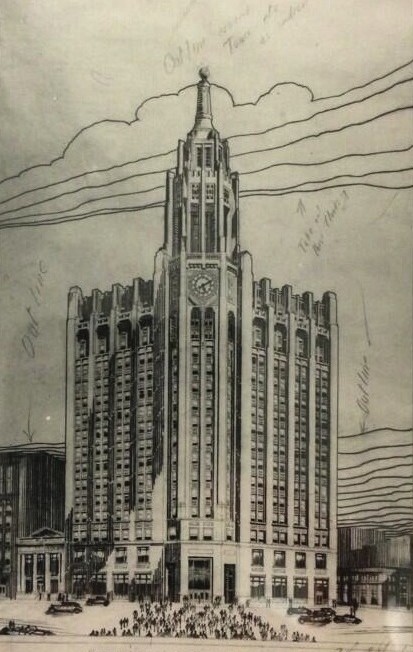The story of stagnation and decline that followed Winnipeg’s growth and ascendancy is a familiar one, if not always one clearly understood. Beginning in 1881, Winnipeg enjoyed a favourable position as far as railways and government transport policies were concerned. As the nineteenth century came to a close, it also became home to a growing set of young, overeager, and shrewdly enterprising businessmen who successfully lured an influx of British investment capital to Winnipeg and the West.
From an economic perspective, Winnipeg was the capital of the Prairies. Everything as far west as the Rockies was simply its hinterland. The many old banks, office buildings, and warehouses in the Exchange District are physical reminders of this.
[related_content slugs=”small-zoning-reforms-could-make-a-big-difference,downtown-buildings-are-more-than-the-opposite-of-parking-lots,lost-winnipeg-osborne-place,ten-best-places-to-get-a-beer-in-winnipeg” position=”right”]
These heady years of growth could not last forever. The outbreak of a long and destructive world war effectively dried up British investment in 1914. The Panama Canal, which opened that same year, meant that for the Prairies west of Regina, goods could be more cheaply shipped to and from global markets through Vancouver than through Winnipeg.
After the war ended, global wheat prices went into freefall, down from the historical highs they enjoyed in the 1900s and ’10s. In response, new political parties and policies began to favour the collectivization of Western Canada’s wheat economy, and the importance of Winnipeg as a dynamic grain trading city began to fade.
Emblematic of Winnipeg’s diminished economic standing was the fact that the only significant office building to rise in Winnipeg in the 1920s–a decade of global prosperity–was the headquarters of the Canadian Wheat Board.
Most significantly, Winnipeg’s business elite had grown old and disinterested in meeting post-war challenges.
James Richardson & Sons, a grain company that had began in Ontario in the 1850s, was a significant exception. Establishing themselves in Winnipeg in the 1920s as a leading grain firm, they were by 1929 poised to construct a new building on property at the corner of Main Street and Portage Avenue East.
What was envisioned was a Gothic-inspired Art Deco building 17-storeys high, plus a soaring tower not unlike those that topped the countless skyscrapers being built in New York and Chicago at the time. It would signal a return to some of the optimism and growing sophistication that had marked Winnipeg pre-1914.
The building would conform to the angle the intersection and provide a terminal vista for Portage Avenue. To be built on a fairly small property, it would share the block with other buildings, most notably the Merchant’s Bank at Main and Lombard. (The seven-storey Merchant’s Bank was the tallest office building in the city when completed in 1902, and the first to be constructed with structural steel.)
Sadly, the plan came too late in the decade to be realized. The Great Depression, which began in October of 1929, would have devastating consequences for the Western Canadian economy, and the new building was put on an indefinite hiatus. As the Depression wore on, the site became home to a sprawling service station, and later a surface parking lot. That such a visible location in the centre of the city could remain so underused was an explicit reminder of Winnipeg’s unmet promise.

But as economic stability gradually returned to Winnipeg and the West in the post-World War II years, Richardson resurrected the idea of a highrise, and a new 34-storey building was completed in 1969–forty years later after first being proposed. The tower and Art Deco articulation were out, and the flat roof and uniformity of the International Style were in.
The new building stood aslant Portage and Main, with plaza space on three sides. (The Merchant’s Building was sadly demolished in this scheme, and its architectural importance is all but forgotten today.) Whatever promise the plazas may have had as informal public gathering spaces was mitigated by what an obnoxious traffic artery Main Street had become, and was destroyed outright by the pedestrian barricades built in the late ’70s.
In any case, Winnipeg had a new tall office building at Portage and Main, a business district that had nearly crystalized after 1914. For citizens who derived their sense civic validation from new construction, the long wait was over, and the Richardson Building would be the first of many new tall buildings downtown throughout the 1970s.
The original Richardson building, an exuberant Art Deco expression of a re-emerging civic optimism, will forever remain little more than an architect’s rendering and the faded possibility of what might have been.
___
Robert Galston likes to write about Winnipeg, urbanism, and other very, very exciting topics. Follow him on Twitter @riseandsprawl
For more, follow us on Twitter: @SpectatorTrib
